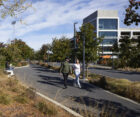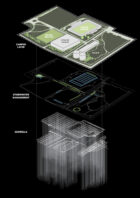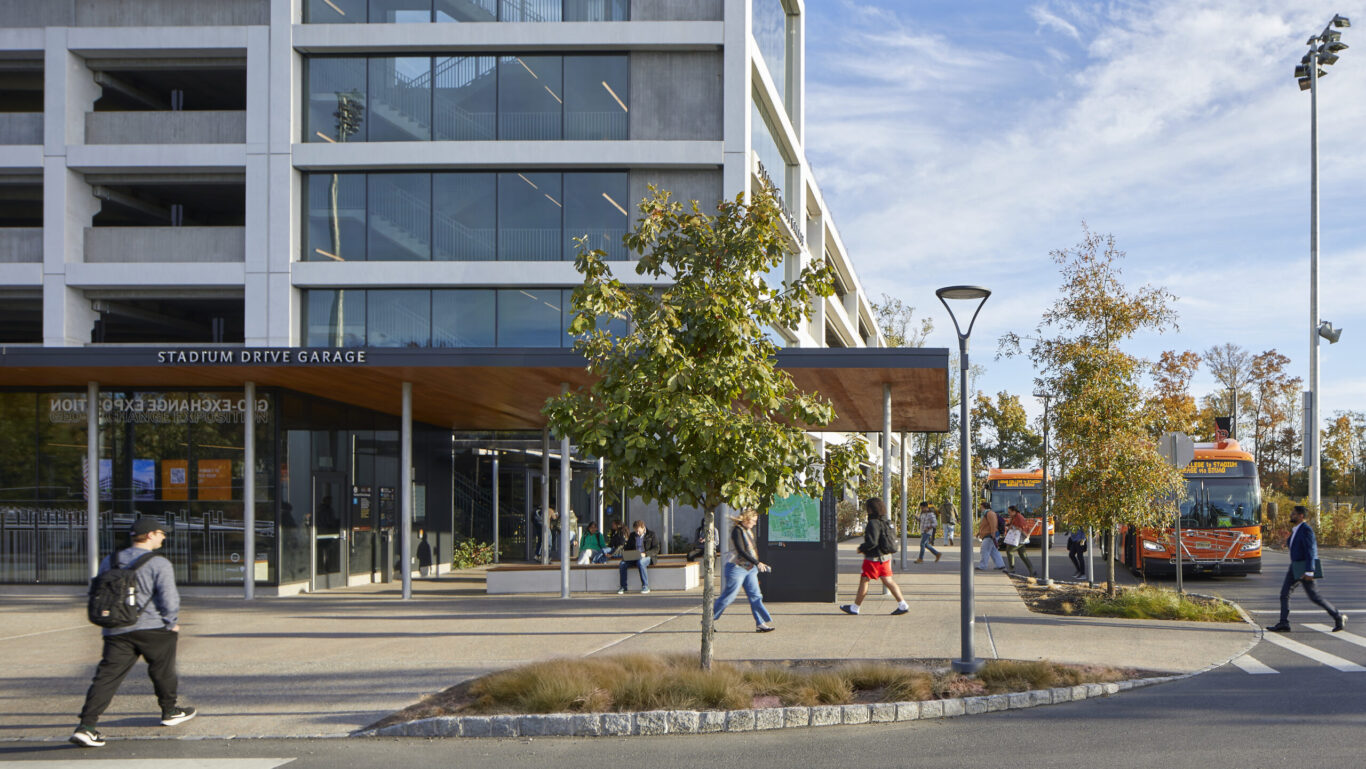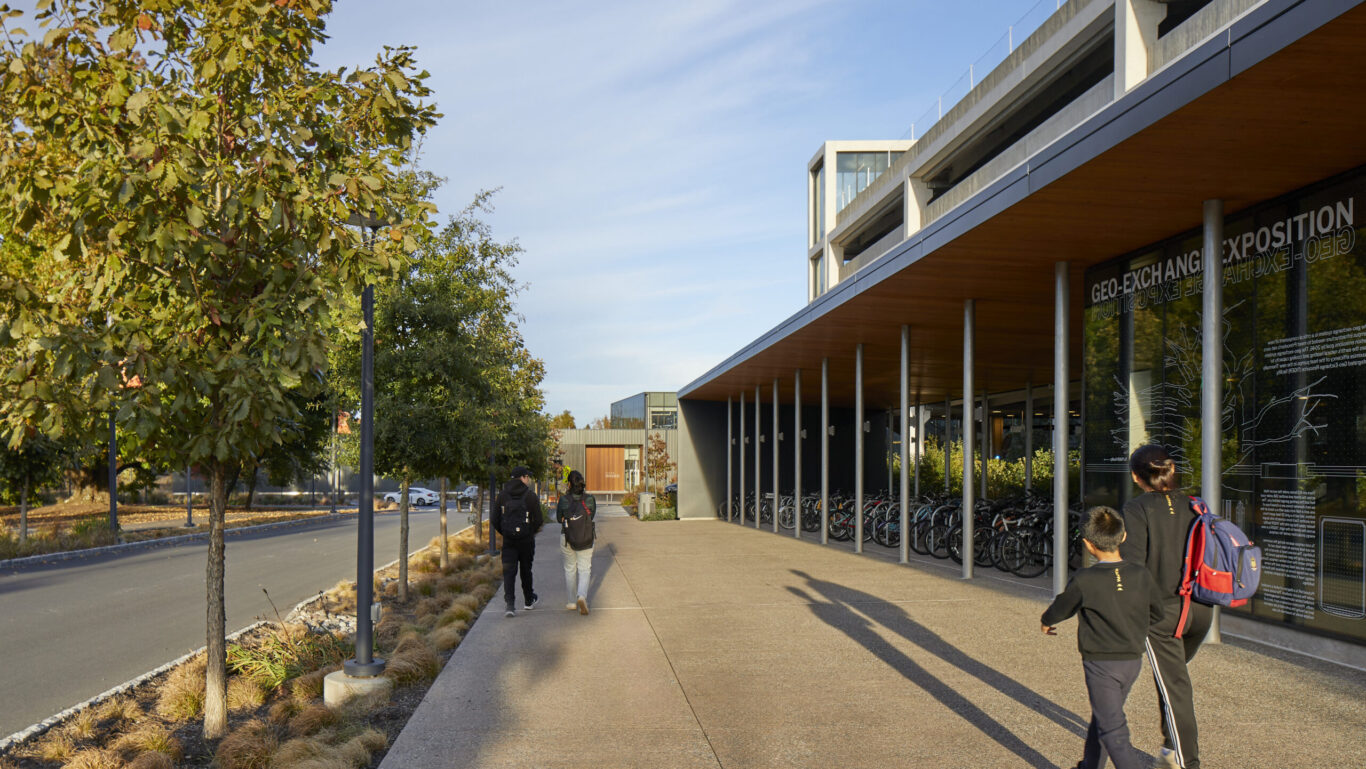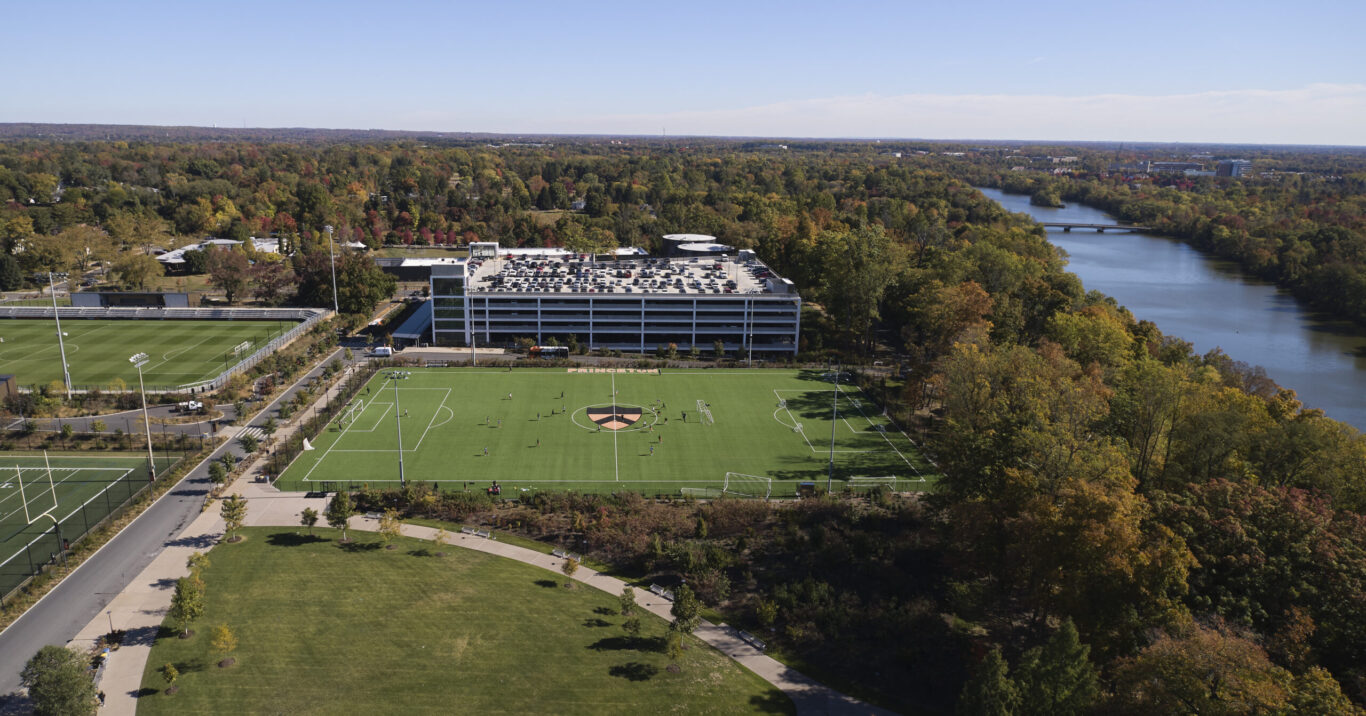Setting up the next century
For decades, the southeast corner of Princeton University served as an ancillary support area: a surface parking lot with temporary structures, two athletics fields, and several acres of unoccupied space. As the institution envisioned its future, setting goals to create a dedicated place for athletics and to reach net zero carbon emissions by 2046, this land presented an opportunity. The question was one that faces many universities today—how can the institution grow while shifting its existing campus to renewable energy?
SOM’s master plan, designed in collaboration with Field Operations, extends the campus with a soccer stadium, an associated practice field, new transit options, and cutting-edge geo-exchange infrastructure that dramatically reduces the university’s carbon footprint. Opened just five years after the master plan was completed, the project is a rarity in the world of campus planning; SOM spearheaded the development of the site, delivering utilities, roads, pathways, open spaces, and infrastructure while coordinating a holistic vision with the architects of the individual buildings.



